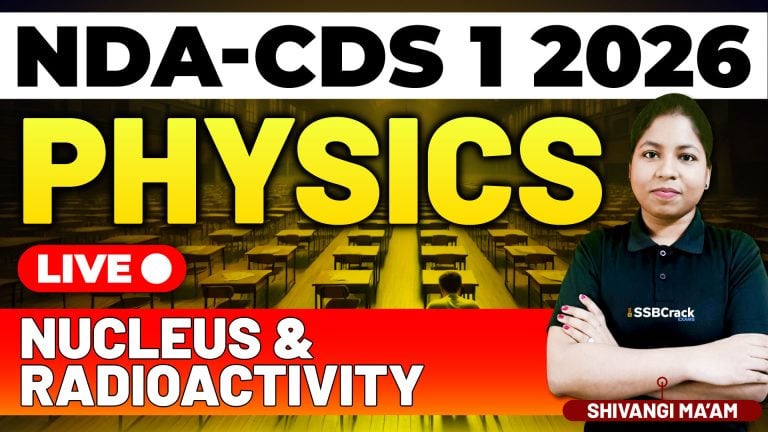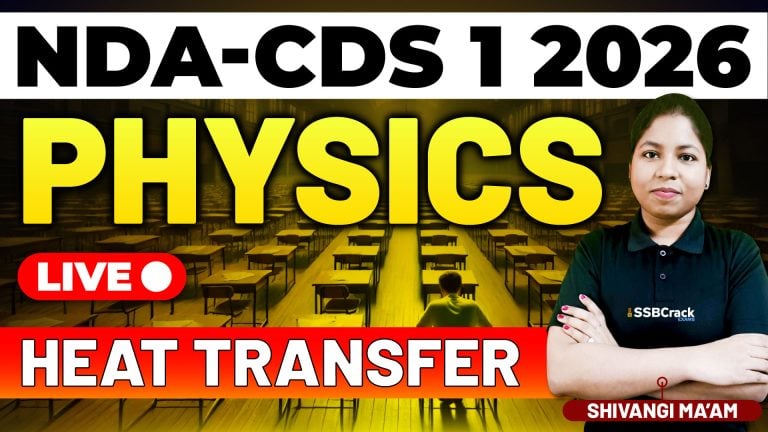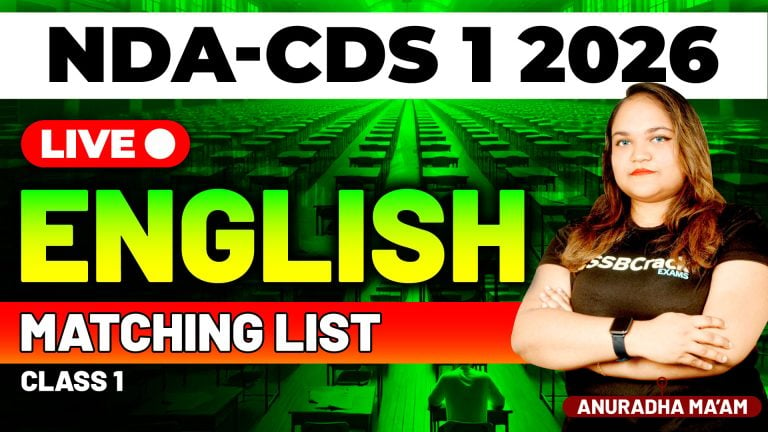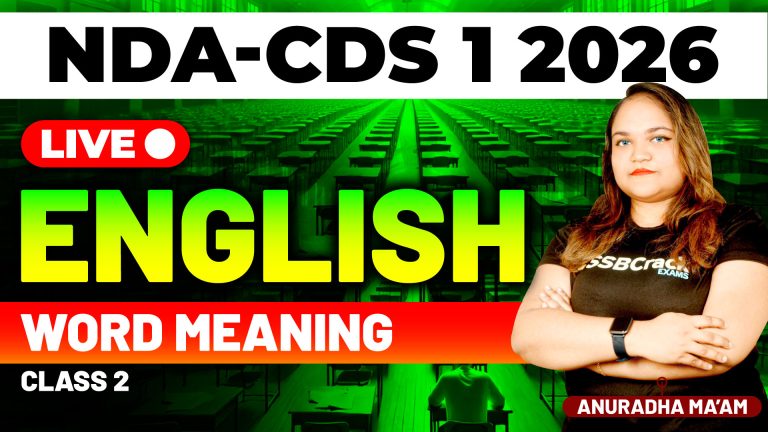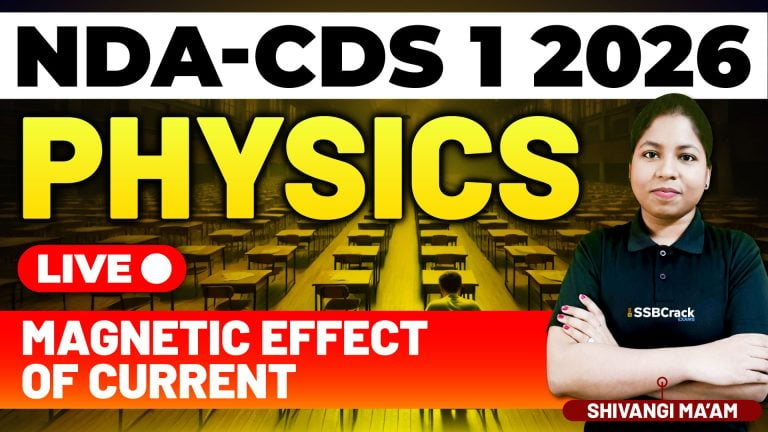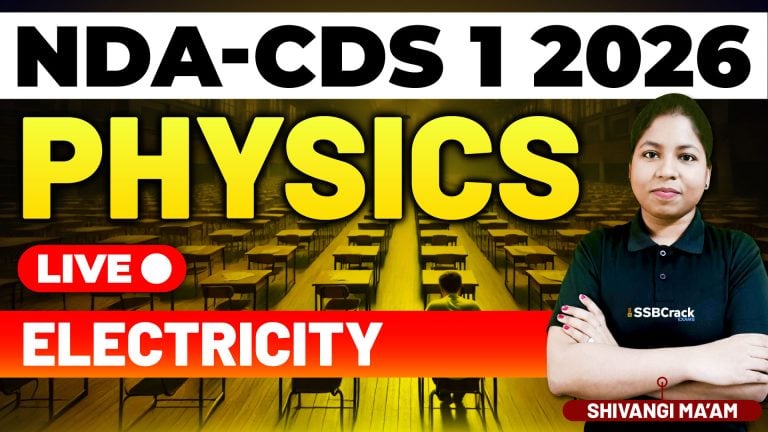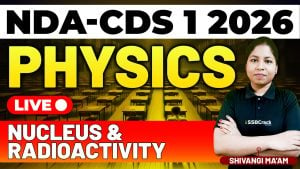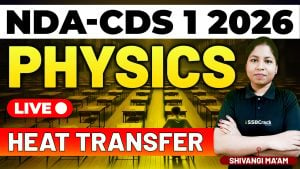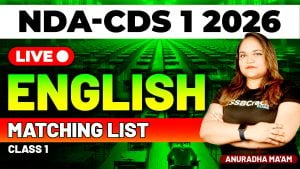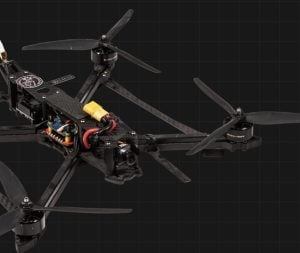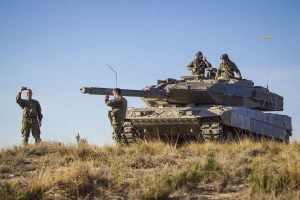In this article we will share Reading Comprehension Latest MCQs for AFCAT CDS NDA TA Exam.
Reading Comprehension Latest MCQs for AFCAT CDS NDA TA Exam
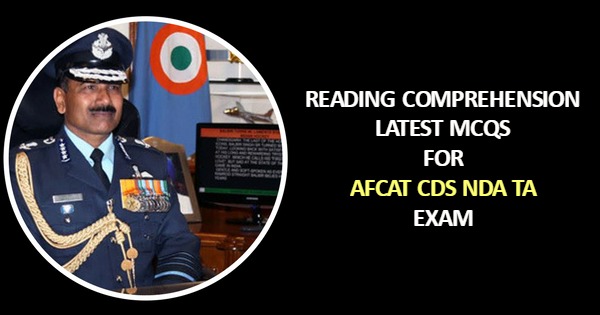
| Light is made up : Light is made up of electromagnetic waves. These vary in length and it is these differences that we perceive as different colours. White light has all the wavelengths of the light spectrum mixed up together. An object looks coloured because light falls on it and it reflects only certain parts of the spectrum. The rest of the spectrum is absorbed by the object. An object that looks white reflects all the light that falls on it. An object that looks red reflects the red part of the spectrum and absorbs the rest. Our eyes detect these different reflected waves and we see them as different colours. |
||
| 1. Without colours we would consider the world a dull and less beautiful place. | ||
| a. True | ||
| b. False | ||
| c. Cannot tell | ||
| Solution. Explanation: The passage makes no comment on how the world would be if there were no colours; | ||
| Answer. c | ||
| 2. White light is an amalgam of all the wave lengths of light. | ||
| a. True | ||
| b. False | ||
| c. Cannot tell | ||
| Solution. Explanation: ‘Amalgamate’ means mixture and the passage states that white light is a mix of all the wavelengths; | ||
| Answer. a | ||
| 3. The passage states that an object that looks blue absorbs all but the blue wavelengths of light. | ||
| a. True | ||
| b. False | ||
| c. Cannot tell | ||
| Solution. Explanation: The passage does not make this statement; | ||
| Answer. b | ||
| 4. The colour we perceive an object to be is determined by the electro-magnetic waves that it absorbs or reflects. | ||
| a. True | ||
| b. False | ||
| c. Cannot tell | ||
| Solution. Explanation: The truth of this statement follows logically from the passage; | ||
| Answer. a | ||
| 5. White paint reflects more light than red paint. | ||
| a. True | ||
| b. False | ||
| c. Cannot tell | ||
| Solution. Explanation: The truth of this statement can be inferred from the passage. | ||
| Answer. a | ||
| Between 1797 and 1815 : Between 1797 and 1815 Europe went through the Napoleonic wars. This period saw France at war with the kingdoms of Prussia, Russia, Austria, Spain and Britain. At that time the French army was the most powerful in Europe. By 1808 France had conquered much of the continent and had created the largest European empire since the Romans two thousand years before. Napoleon Bonaparte was its emperor and the military leader who oversaw the many major victories. However, a disastrous campaign in Russia, retreat from the Spanish peninsular and British supremacy at sea eventually allowed a combined European force to defeat Napoleon’s army at Waterloo. |
||
| 6. The Napoleonic wars lasted 18 years. | ||
| a. True | ||
| b. False | ||
| c. Cannot tell | ||
| Solution. Explanation: The period 1797 to 1815 totals 18 years; | ||
| Answer. a | ||
| 7. By 1808 Napoleon headed an empire that controlled most of the continent of Europe. | ||
| a. True | ||
| b. False | ||
| c. Cannot tell | ||
| Solution. Explanation: The passage states that Napoleon was the emperor of France which conquered much of the continent of Europe; | ||
| Answer. a | ||
| 8. At the height of Napoleon’s victories the French army was the largest | ||
| a. True | ||
| b. False | ||
| c. Cannot tell | ||
| Solution. Explanation: The passage states that the French army was the most powerful but you cannot safely infer that it was also the largest; | ||
| Answer. c | ||
| 9. France won battles against Prussia, Russia, Austria and Britain. | ||
| a. True | ||
| b. False | ||
| c. Cannot tell | ||
| Solution. Explanation: The passage states that France was at war with these kingdoms but does not say whether France won battles against them all; | ||
| Answer. c | ||
| 10. The passage states that the battle of Waterloo took place in 1815. | ||
| a. True | ||
| b. False | ||
| c. Cannot tell | ||
| Solution. Explanation: No date for this battle is given in the passage. | ||
| Answer. b | ||
| Traditionally medicine was : Traditionally medicine was the science of curing illness with treatments. For thousands of years people would have used plants and would have turned to priests for cures. In more recent times illness has been attributed less to the intervention of gods or magic and instead to natural causes. Medicine today is as much concerned with prevention as cure. Doctors use treatments of many types, including radiation and vaccination, both of which were unknown until very recent times. Other treatments have been known about and practiced for centuries. Muslim doctors were skilled surgeons and treated pain with opium. When Europeans first reach the Americas they found healers who used many plants to cure illnesses. The Europeans adopted many of these treatments and some are still effective and in use today. |
||
| 11. Modern medicine is the science of curing illness. | ||
| a. True | ||
| b. False | ||
| c. Cannot tell | ||
| Solution. Explanation: The passage states that this was true traditionally but that today medicine is also concerned with prevention; | ||
| Answer. b | ||
| 12. Medicine is a science that owes its success to modern treatments. | ||
| a. True | ||
| b. False | ||
| c. Cannot tell | ||
| Solution. Explanation: The passage describes the legacy of treatments and techniques pioneered centuries ago; | ||
| Answer. b | ||
| 13. Vaccination is a relatively recent discovery. | ||
| a. True | ||
| b. False | ||
| c. Cannot tell | ||
| Solution. Explanation: This is stated in the passage; | ||
| Answer. a | ||
| 14. The author of the passage believes that prevention is better than cure. | ||
| a. True | ||
| b. False | ||
| c. Cannot tell | ||
| Solution. Explanation: The views of the author are not disclosed; | ||
| Answer. c | ||
| 15. Practitioners of modern medicine make use of many techniques and technologies. | ||
| a. True | ||
| b. False | ||
| c. Cannot tell | ||
| Solution. Explanation: The passage states that doctors use treatments of many types and gives examples of both techniques (surgery) and technologies such as radiation and vaccines. | ||
| Answer. a | ||
| Asia is the world’s largest : Asia is the world’s largest continent and stretches from the Baring Sea in the east to Turkey and Europe in the west. Its southern border comprises many islands, including those that make up Indonesia. Since independence of colonial powers Asian economies have boomed. First were Japan, Singapore, Taiwan and South Korea and later Malaysia, Thailand and Indonesia. More recently China and India have enjoyed rapid economic growth. The south-west and central parts of the continent are deserts. The Himalayan Mountains divide the cold north from the tropical south. The people of Asia make up over two-thirds of the world’s population and they live in the birthplace of the world’s earliest civilizations. |
||
| 16. Civilization began in the continent of Asia. | ||
| a. True | ||
| b. False | ||
| c. Cannot tell | ||
| Solution. Explanation: The passage states that Asia was the birthplace of civilization; | ||
| Answer. a | ||
| 17. The colonial era was a disaster for Asia. | ||
| a. True | ||
| b. False | ||
| c. Cannot tell | ||
| Solution. Explanation: The passage does not provide any information on this point; | ||
| Answer. c | ||
| 18. More of the world’s population lives in Asia than in any other continent. | ||
| a. True | ||
| b. False | ||
| c. Cannot tell | ||
| Solution. Explanation: The passage states that the people of Asia make up over two-thirds of the world’s population; | ||
| Answer. a | ||
| 19. Post-colonial growth first occurred in Singapore. | ||
| a. True | ||
| b. False | ||
| c. Cannot tell | ||
| Solution. Explanation: The passage states that the first economies to boom were Japan, Singapore, Taiwan and South Korea. It does not say in which of these it first occurred; | ||
| Answer. c | ||
| 20. The continent of Antarctica is smaller than Asia. | ||
| a. True | ||
| b. False | ||
| c. Cannot tell | ||
| Solution. Explanation: The passage states that Asia is the world’s largest continent so the truth of this statement can be inferred. | ||
| Answer. a | ||

